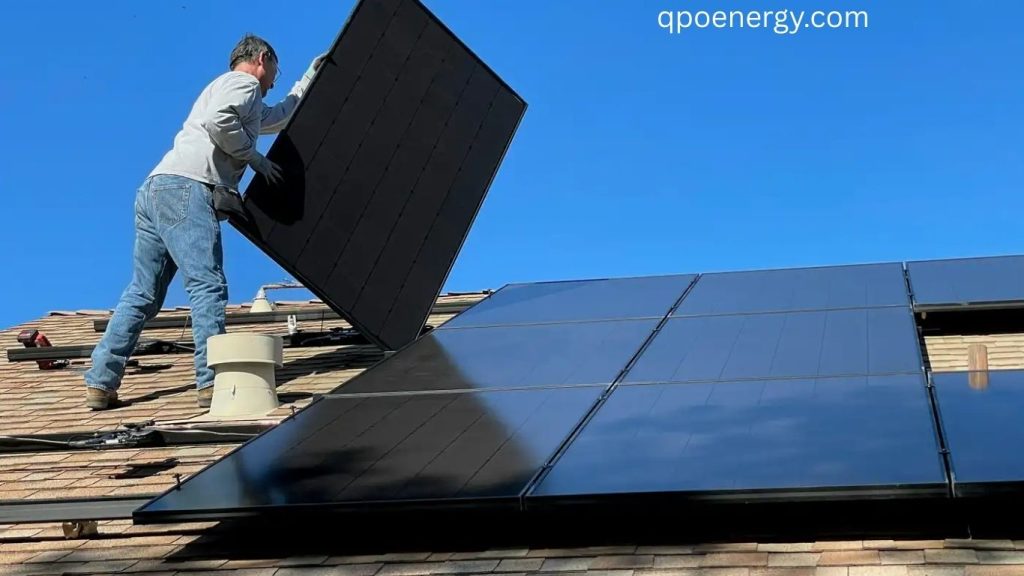Homeowners across the United States are rethinking how they power and insulate their homes. Whether it’s adding attic insulation, replacing an old air conditioning unit with a modern heat pump, or installing rooftop solar panels, energy-efficient upgrades are quickly moving from “nice to have” to “must-have.” These improvements not only lower energy bills but also reduce a household’s carbon footprint.
For years, federal tax credits made these projects more affordable, helping millions of families offset upfront costs. However, many of these incentives are now on the chopping block. With recent changes in federal policy, homeowners who have been considering an upgrade may need to act fast before these valuable credits disappear.
Read More: Slash Your Utility Bills: 8 Expert-Backed Tips to Save Big and Stress Less
Why Energy Tax Credits Matter
Energy-efficient home upgrades often come with a steep price tag. Solar installations, for example, can range from $15,000 to $30,000 depending on the size of the system. Heat pumps and weatherization improvements, while typically less costly, still require significant investment.
Tax credits have long been a solution, providing a direct reduction in what homeowners owe to the IRS. Unlike deductions, which only lower taxable income, credits directly cut the amount of tax due. For families looking to make environmentally friendly changes, these programs offered a critical financial incentive.
But now, with adjustments in federal legislation, many of these credits will be phased out or significantly reduced in the coming months.
What’s Changing and Why
Earlier this year, President Donald Trump signed a sweeping tax and spending bill. Among its many provisions was the reduction or elimination of several federal tax credits tied to renewable energy and home efficiency projects.
The reasoning, according to supporters of the bill, was to simplify the tax code and reduce federal spending. Critics argue that rolling back these incentives could slow the adoption of clean energy, reduce consumer savings, and undermine progress in fighting climate change.
Regardless of political stance, one fact remains clear: the financial landscape for homeowners considering energy upgrades is changing, and timing is everything.
The Homeowner’s Dilemma: Upgrade Now or Wait?
For many families, the big question is whether to move forward with upgrades before the tax credits disappear or to hold off and hope for new incentives in the future. Experts suggest that waiting could be risky.
Rebecca Olson, senior director of residential and community energy at the Center for Energy and Environment, notes that energy efficiency improvements provide immediate benefits. “Every month you delay, you’re essentially leaving money on the table in the form of higher utility bills,” she explains.
Similarly, solar developer Eric Pasi emphasizes the long-term financial return. “Solar isn’t just about saving money this year,” he says. “It’s about locking in predictable energy costs for decades. Even without the credits, homeowners often see significant savings over the lifespan of the system.”
Real Homeowners, Real Experiences
Homeowners who have already invested in clean energy often speak about more than just the financial benefits. Many cite peace of mind, comfort, and even pride in contributing to a cleaner planet.
For instance, families who have upgraded insulation or installed heat pumps often report more consistent indoor temperatures and fewer drafts. Solar users frequently mention a sense of independence, knowing they are generating their own electricity.
These stories highlight a key point: while tax credits make upgrades more affordable, the benefits extend far beyond the bottom line.
What You Need to Know Before Investing
If you are considering an energy-efficient upgrade, here are some steps to take:
Research Available Incentives
Even though federal tax credits are shrinking, many states and utilities still offer generous rebates and financing programs. Check your local utility company’s website or use the Database of State Incentives for Renewables and Efficiency (DSIRE) to find updated information.
Calculate Long-Term Savings
While upfront costs may seem intimidating, consider your monthly energy bills. A properly sized solar system, for example, can cut electricity costs by 50% or more. Over 20 years, that can mean tens of thousands in savings.
Work with Trusted Contractors
Choosing an experienced installer or contractor ensures your system performs efficiently. Local companies, such as All Seasons Heating and Cooling in Minnesota, stress the importance of quality installation to maximize both comfort and savings.
Consider Financing Options
Loans, power purchase agreements, and leasing options can make upgrades more affordable. Some banks and credit unions now offer green energy loans with favorable terms.
The Bigger Picture: Why This Matters
The disappearance of federal energy tax credits isn’t just about homeowners. It also has implications for the economy and environment.
- Economic Impact: Renewable energy industries like solar and HVAC efficiency support thousands of jobs. Reduced incentives could slow growth in these sectors.
- Environmental Impact: The U.S. still relies heavily on fossil fuels. Cutting back on clean energy incentives may delay progress in reducing greenhouse gas emissions.
- Consumer Impact: Without tax credits, homeowners face higher upfront costs, which may discourage them from making needed improvements.
As Eric Pasi points out in his book CleanWave: A Guide to Success in the Green Recovery, momentum in the clean energy transition relies on a combination of innovation, affordability, and public policy. Rolling back incentives risks stalling that momentum.
Community Voices and Open Discussion
Public interest in this topic is strong, as seen in community forums and radio discussions. Programs like MPR News are engaging listeners directly, inviting them to share their stories and questions.
Have you installed solar panels, upgraded to a heat pump, or weatherized your home? What motivated your decision? Was it worth the investment?
These are not just personal decisions but part of a broader conversation about how communities approach energy use and sustainability.
Act Now: Your Next Steps
With the clock ticking on federal tax credits, now is the time to take action. Homeowners should:
- Review which incentives still apply to their projects.
- Get quotes from certified contractors.
- Weigh long-term financial and environmental benefits.
- Make decisions before deadlines cut off valuable savings.
Frequently Asked Questions:
What are federal tax credits for home energy upgrades?
Federal tax credits are government incentives that reduce the amount of taxes you owe when you invest in energy-efficient upgrades, such as solar panels, insulation, or heat pumps.
Which home improvements qualify for these tax credits?
Eligible projects typically include solar energy systems, heat pumps, energy-efficient windows and doors, insulation upgrades, and certain high-efficiency HVAC systems.
When do these energy tax credits expire?
Many credits are being reduced or phased out under recent federal tax law changes. Deadlines vary, but most are expected to end soon, making this the last chance for maximum savings.
How much money can homeowners save with these credits?
Savings depend on the project, but credits often cover 22%–30% of installation costs. For large upgrades like solar, this can mean thousands of dollars in tax savings.
Are state or local incentives still available if federal credits end?
Yes. Many states, cities, and utility companies offer rebates, low-interest financing, or other programs that reduce upfront costs even after federal credits disappear.
Is it still worth investing in energy upgrades without tax credits?
Absolutely. Homeowners benefit from lower monthly utility bills, increased property value, improved comfort, and reduced environmental impact—making upgrades financially smart long term.
How do I claim a tax credit for my energy upgrade?
You’ll need to complete IRS Form 5695 (Residential Energy Credits) when filing your taxes. Be sure to keep receipts, product certifications, and installation records.
Conclusion
The clock is running out on valuable federal tax credits for home energy upgrades. For homeowners considering solar panels, heat pumps, or insulation improvements, acting now can lock in substantial savings before these incentives vanish. Beyond the financial relief, energy-efficient upgrades deliver lasting benefits—lower utility bills, greater comfort, energy independence, and a smaller environmental footprint. While federal credits may be disappearing, the demand for sustainable, cost-saving solutions remains strong. State programs, utility rebates, and long-term energy savings continue to make upgrades worthwhile. The message is clear: don’t delay. Each month of waiting means higher energy costs and missed opportunities.


